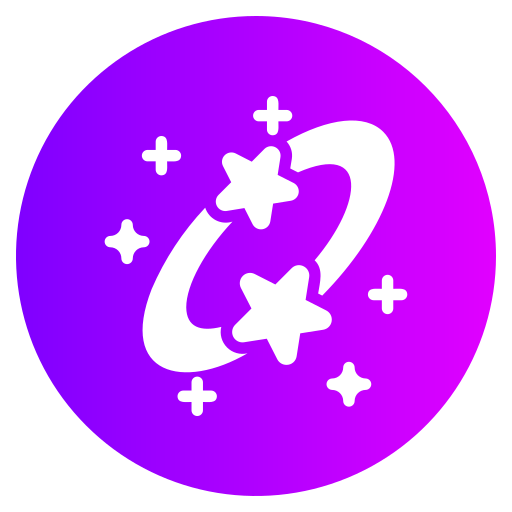Exploring the Cosmic Connection: How to Use Astrology in Relationships
Astrology, with its rich tapestry of celestial insights, offers more than just a glance at our individual personalities. When it comes to relationships, understanding the interplay between zodiac signs can provide a deeper connection and harmony between partners. Whether you’re navigating a new romance or deepening a long-term relationship, astrology can offer valuable guidance. Here’s how to use the stars to enhance your relationships.
Understanding Zodiac Compatibility
The Basics of Astrological Compatibility
Astrological compatibility, often referred to as synastry, is a fascinating way to explore how your zodiac signs interact. Each sign has unique traits and tendencies that can either harmonize or clash with those of another sign. For instance, fire signs (Aries, Leo, Sagittarius) are known for their passionate and dynamic nature, while earth signs (Taurus, Virgo, Capricorn) are more grounded and practical. Understanding these elements helps in recognizing areas of synergy and potential friction.
The Role of Elemental Groups
The zodiac signs are grouped into four elements: Fire, Earth, Air, and Water. Each element has specific characteristics that influence relationships:
- Fire Signs (Aries, Leo, Sagittarius) are enthusiastic and adventurous. They thrive on excitement and can inspire their partners.
- Earth Signs (Taurus, Virgo, Capricorn) are dependable and practical. They provide stability and a sense of security.
- Air Signs (Gemini, Libra, Aquarius) are intellectual and communicative. They foster dynamic and engaging conversations.
- Water Signs (Cancer, Scorpio, Pisces) are emotional and intuitive. They offer deep empathy and emotional connection.
By understanding these elemental dynamics, you can navigate the strengths and challenges within a relationship more effectively.
Leveraging Sun Signs in Relationships
Sun Sign Characteristics
The Sun sign, determined by your birth date, represents your core identity and fundamental traits. In relationships, knowing your partner’s Sun sign can help you understand their primary motivations and behavioral patterns. For instance, if you’re dating a Leo, you might find them to be charismatic and expressive, while a Virgo might be more reserved and detail-oriented.
Balancing Strengths and Weaknesses
Recognizing how your Sun sign traits mesh with your partner’s can enhance your connection. For example, a Sagittarius’s love for adventure can be balanced by a Taurus’s steadiness, creating a dynamic yet stable relationship. Conversely, conflicts may arise if one partner’s traits clash with the other’s, such as a Capricorn’s need for structure conflicting with a Gemini’s desire for spontaneity. Awareness of these traits allows for more effective communication and compromise.
Moon Signs and Emotional Compatibility
The Importance of Moon Signs
While the Sun sign represents your outward personality, the Moon sign governs your emotional landscape and inner self. Emotional compatibility can be just as crucial as personality compatibility in a relationship. For instance, if your Moon sign is in Cancer, you may seek emotional security and nurturing, while your partner’s Moon sign might be in Aquarius, preferring intellectual connection and independence.
Navigating Emotional Needs
Understanding each other’s Moon signs can offer insights into emotional needs and responses. For instance, a partner with a Moon in Scorpio may have intense emotional needs and seek deep connection, while someone with a Moon in Libra might prioritize harmony and balance. Recognizing these needs helps in providing the right kind of support and understanding in the relationship.
Using Astrology for Conflict Resolution
Identifying Potential Conflicts
Astrology can also help identify potential sources of conflict in a relationship. By examining both partners’ charts, you can pinpoint areas where their planetary aspects might create tension. For example, a square aspect between one partner’s Mars (action and aggression) and the other’s Venus (love and harmony) might lead to disagreements about how to approach conflict or express affection.
Harmonizing Differences
Once potential conflicts are identified, astrology offers strategies for resolution. For example, if you notice that your partner’s Saturn (discipline and responsibility) is challenging your Moon (emotions), it might indicate issues related to emotional security and responsibility. Understanding these aspects allows you to address them constructively, fostering a more harmonious relationship.
Exploring Relationship Synastry and Composite Charts
Synastry Charts: A Detailed Look
A synastry chart compares the natal charts of two individuals, highlighting how their planets interact. This detailed analysis reveals how you influence each other and where your strengths lie. For instance, if one partner’s Venus (love) forms a positive aspect with the other’s Mars (passion), it suggests a strong romantic connection.
Composite Charts: The Relationship’s Unique Identity
A composite chart combines the two individuals’ charts into a single chart that represents the relationship as a whole. This chart provides insights into the relationship’s dynamics, challenges, and potential. It helps to understand the relationship’s purpose and the areas where growth is possible.
By using these astrological tools, you can gain a deeper understanding of your relationship’s potential and navigate its complexities with greater ease. Exploring the cosmic influences on your bond can lead to a more harmonious and fulfilling connection with your partner.
